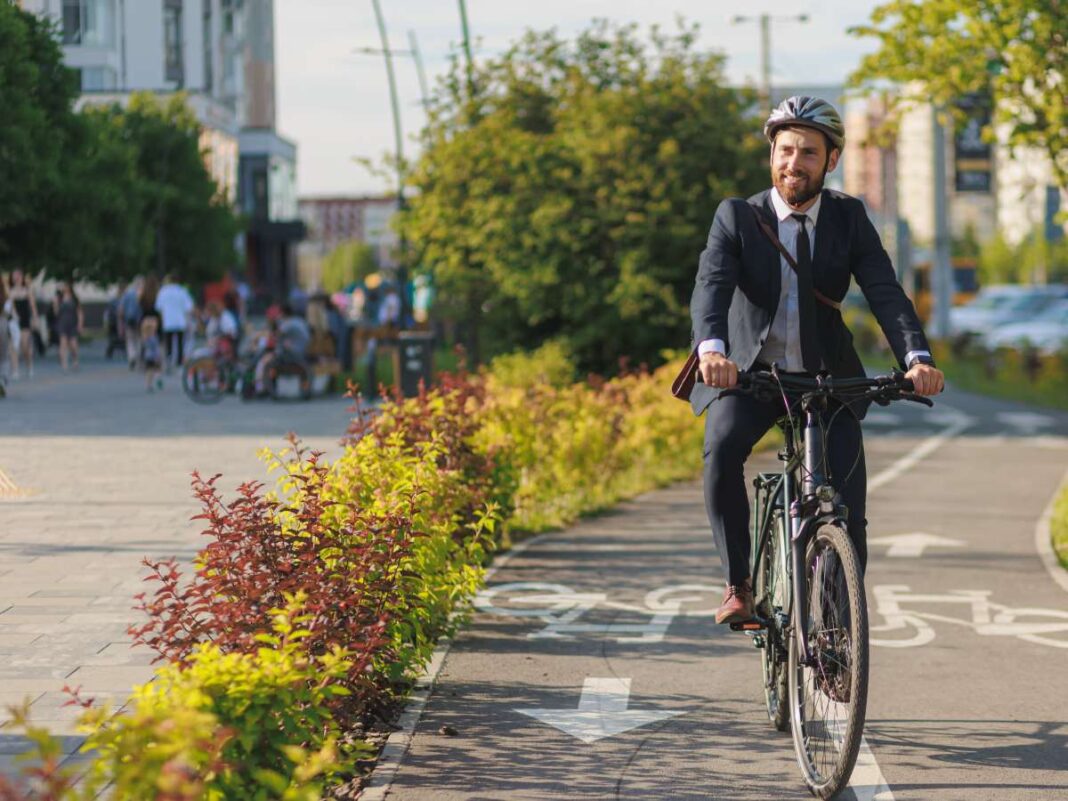Embracing bike commuting in the city is a fantastic way to reduce pollution, save money, and boost your overall health. However, urban environments pose unique challenges that require special consideration for a safe and enjoyable ride.
Preparing Your Bike for the Commute
Before you set off, it’s crucial to thoroughly examine your bike to ensure safety and functionality. Key checks include:
- Tires: Confirm proper inflation.
- Brakes: Test for responsiveness.
- Chain: Ensure it’s securely attached.
- Lights: Verify that the front and rear lights are operational.
Always wear a helmet for head protection. Use bright lights for visibility and opt for bright-colored clothing to enhance your presence on the road.
Planning and Practicing Your Route
Mapping out your route beforehand reduces stress and helps you synchronize with traffic patterns. Consider conducting practice rides during quieter hours for a relaxed introduction to the route.
Staying Safe in Traffic
Maintain full vigilance by keeping your head on a swivel, using quick over-the-shoulder checks to stay aware of surrounding vehicles. This not only keeps you informed but also signals to drivers that you’re attentive to traffic movements.
Cyclists are allowed full use of the road and should ride three feet away from parked cars. Be sure to follow all traffic laws, such as riding in the direction of traffic, halting at red lights and stop signs, and yielding to pedestrians when there are no signals.
Stay visible, particularly to the drivers of large vehicles, since trucks, buses, and oversized vehicles have significant blind spots. Avoid overtaking on the right side of such vehicles, especially at intersections, to prevent accidents.
Choosing the Right Bike
Selecting the appropriate bike for your commute enhances comfort and efficiency. Consider these options:
| Bike Type | Best For | Considerations |
| Road/Hybrid Bikes | Long-distance commutes on paved roads | Speedy and lightweight, but may be less stable on rough terrain |
| Gravel/Mountain Bikes | Rough roads, unpaved paths, and adverse weather conditions | Wider tires and suspension, heavier and slower on paved roads |
| E-Bikes | Faster commutes, carrying heavy loads | Heavier, may be challenging to carry upstairs |
If speed and efficiency are your priorities, a road or hybrid bike might be ideal. For those dealing with rougher terrain or weather conditions, consider a gravel or mountain bike.
Looking for reliable commuter bikes? Explore options like the Schwinn Wayfarer for a classic ride or the Monroe 250 for an electric boost.
Carrying Your Essentials
Transporting your gear can be managed in several ways. Riders can carry items on their bikes using racks or on their bodies with snug-fitting bags to avoid shifting while cycling. Waterproof bags are recommended for varying weather conditions.
Some commuters prefer panniers attached to a rear rack for even weight distribution. Others opt for a durable backpack. While backpacks are practical, they can cause back issues on longer or frequent commutes, whereas panniers prevent load on the rider’s back.
Preventing Bike Theft
To lower the risk of theft, lock your bike to immovable and secure objects in well-lit areas. Here are some tips:
- Invest in a High-Quality Lock: It is advised to use a sturdy U-lock or heavy-duty chain.
- Secure Removable Parts: Use cable locks or locking skewers for wheels and seats.
- Remove Accessories: Take lights, bags, and other accessories with you if they aren’t securely attached.
- Choose Wisely Where You Park: Avoid leaving your bike in isolated or dimly lit areas.
Time Management
Track the time required for your commute, factoring in traffic, weather, and preparation time (e.g., changing clothes at work) to ensure prompt arrival. Time management is crucial for a stress-free experience.
Engaging with the Cycling Community
Online forums and local cycling groups are great places to share experiences and get personalized strategies for effective and comfortable bike commuting. Connecting with fellow cyclists can provide support and valuable insights.
Additional Tips for a Smooth Commute
- Dress Appropriately: Wear comfortable clothing, but avoid loose garments that could get caught in the bike’s moving parts. Consider rolling up wide-leg pants and securing loose items.
- Stay Informed on Bike Laws: Familiarize yourself with local cycling regulations to ensure you’re complying with traffic laws.
- Keep Your Bike Maintained: Regular tune-ups and carrying essential repair tools like a flat-fix kit can save you from unexpected delays.
Cycling to work is not just about transportation; it’s about adopting a lifestyle that benefits both you and the environment. By following these best practices, you can make your urban bike commute safe, efficient, and enjoyable.

